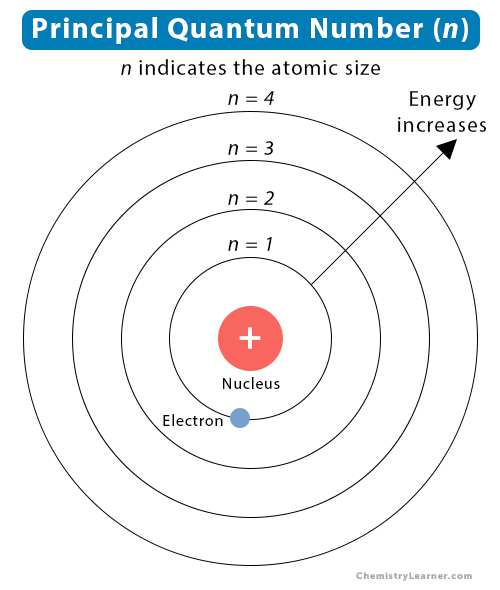Principal Quantum Number
An atom consists of a nucleus surrounded by electrons in orbits or shells. A set of quantum numbers indicates the position and motion of the electrons.
What is Principal Quantum Number
The principal quantum number represents the distance of the electrons from the nucleus, and hence, the atomic size. It is denoted by the symbol n and takes positive integer values only. Thus, n = 1,2,3,4,5,6,7. Elements with n > 7 are not known. A higher n-value indicates a large atom [1-4].
What Does the Principal Quantum Number Determine
The principal quantum number determines the energy of the electron. According to the Bohr model of the atom, electrons move around the nucleus in specific shells with energies that depend on the principal quantum number. This model applies to hydrogen and hydrogen-like atoms, having only one electron. Bohr calculated the electron energy for a hydrogen-like atom and found the following equation.
E = -13.6 eV Z2/n2
Where,
E: energy
Z: atomic number
n: principal quantum number
How to Find Principal Quantum Number
The principal quantum number of an element can be determined from the periodic table. The elements are designated by their period and group. For example, potassium is in the fourth period. Hence, it can take n-values ranging from 1 to 4 [5].
The principal quantum number can also be determined from the electron configuration. For example, the electron configuration of potassium is [Ar] 4s1. Hence, its valence electron resides in the fourth shell or n = 4.





